Jaime Permuth is a Guatemalan photographer living and working in New York City. He is a 2014 Smithsonian Museum Artist Fellow and is also currently nominated for a United States Artists Fellowship, with a $50,000 prize for awardees. In 2013, his first monograph YONKEROS was published by La Fabrica Editorial (Madrid) and was subsequently nominated for the Prix Pictet. Also in 2013, he was awarded an NFA Fellowship from the National Association of Latino Arts and Cultures. In 2012, he was nominated for the Santa Fe Prize in Photography and was also one of fifteen artists in the United States nominated for the Smithsonian American Art Museum’s Contemporary Artist Award. Jaime Permuth is a Faculty Member at the School of Visual Arts where he teaches in the Master of Professional Studies in Digital Photography program.
Tell us about your approach to photography. How it all started? What are your memories of your first shots?
Jaime Permuth (JP): Falling in love with photography was as simple as looking through the viewfinder of a camera for the first time. I was ten years old and completely fascinated by my older cousin’s Kodak Instamatic, which had a very simple but elegant design. The camera was a skinny and flat rectangular device. Film was advanced by pulling laterally on the body, which extended sideways before snapping back into place. There was also a little flash cube that would rotate with each use; one could fire it off four times before discarding it and replacing it with a fresh one. In every aspect it was a perfect little machine for a young boy.
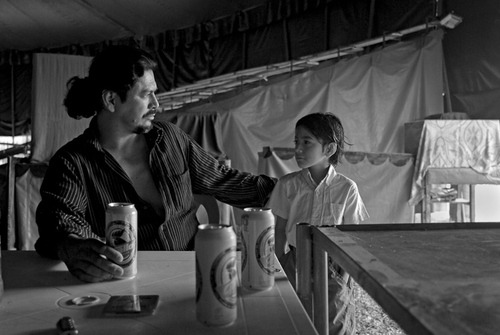
© Jaime Permuth, from the series ‘Tarzan Lopez’
After much pleading and cajoling, my cousin allowed me to take a single shot that day. I actually never saw the processed film and have no record of that first photograph I took. However, in the act of raising my eye up to that small rectangular frame I experienced a new and thrilling kind of clarity. Although I couldn’t have put into words then, the act of looking had become something tangible: a way to begin collecting and cataloguing the vast complexity of the world.
My father gave me my first camera shortly thereafter. However much I begged him for an Instamatic he refused me at every turn. Instead he gave me a Pentax SLR that had been languishing unused for years. It was heavy, had a lens that needed focusing and all kinds of complicated settings and scales to decipher. Despite my initial reluctance, he patiently and thorughly explained the workings of the camera and the basic principles of photography to me.
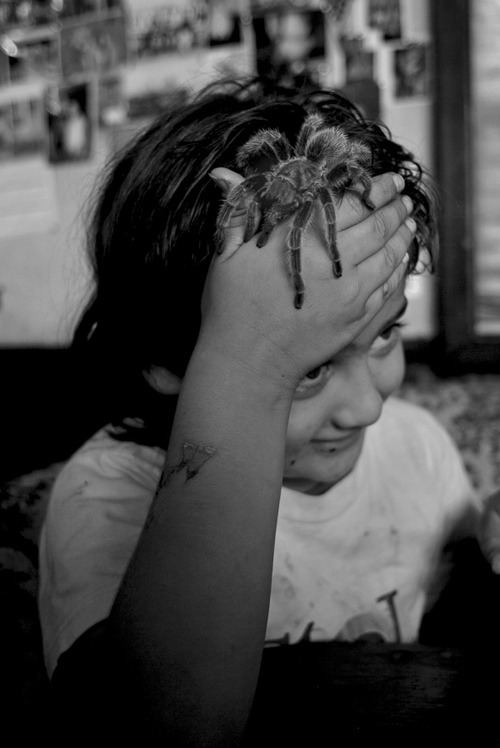
© Jaime Permuth, from the series ‘Tarzan Lopez’
Growing up in Guatemala in the 1970’s meant that film and darkroom supplies were very hard to come by. Any time somebody traveled to the USA we would impose on them to bring back a brick of black and white and a brick of slide film. These would immediately go into the freezer . We would thaw out individual rolls of film the night before shooting them. A roll of 36 exposures might last me an entire week. Which meant that every shot was very deliberate and each contact sheet had considerable gravitas, like poring through a long and thoughtful diary entry.
How did you get to SVA and New York Film Academy? What was your first teaching experience? What directed you towards a teaching career?
JP: My first experience teaching was a near disaster. I was hired by El Museo del Barrio and ICP to design a photography workshop for highschool students in East Harlem. I wrote a very ambitious curriculum, which looked good on paper but was far too advanced for the students. I also had zero experience teaching and knew nothing about working with teens -or for that matter, the politics involved in working on commissions for big institutions. Somehow, I managed to complete the project and the whole thing was a kind of trial by fire. Overall, the experience was a tough one, and it nearly put an end to my teaching carreer before it even got started. Nevertheless, a few years later, a good friend recommended me for an Adjunct gig at SUNY New Paltz. This was a teaching assignment that I thoroughly enjoyed and it got me excited about pursuing additional opportunities in education.
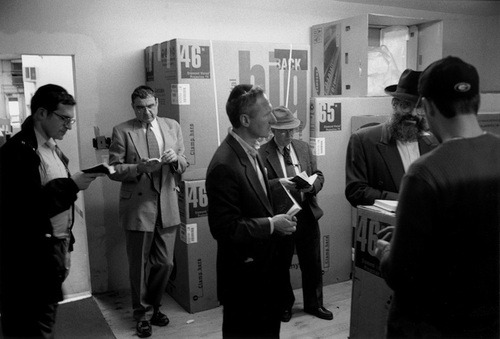
© Jaime Permuth, from the series ‘Manhattan Mincha Map’
In 2008, after more than a decade of commissions, exhibitions and publications, I decided to return to school to ease my transition from analogue to digital. I enrolled in a one-year intensive Master of Professional Studies in Digital Photography at SVA. After graduation I hired on as Faculty and I currently organize the department’s i3 Lecture Series. i3 is a bi-weekly series and we strive to feature the most inspiring artists and industry leaders working in photography today. Live lectures are also videocast on iTunes University and seen across the globe. Needless to say, I love that gig!
My role at New York Film Academy is more of a hands-on involvement with teaching students the fundamentals of photographic seeing and personal vision. I teach several courses at NYFA and also curate and organize the final exhibition for grads. Aside from these, I’ve taught workshops nationally and internationally. Next one coming up will be in October. I’ll be conducting a three-day intensive on Project Management for Photographers at Gimnasio de Arte in Mexico City.
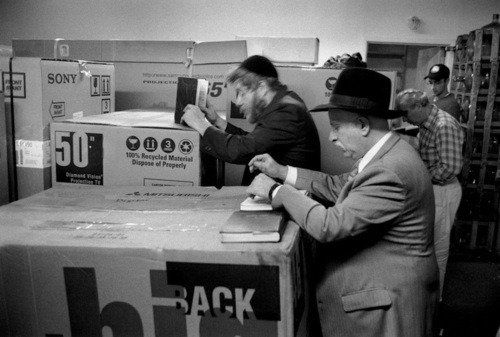
© Jaime Permuth, from the series ‘Manhattan Mincha Map’
What I love about teaching is the ongoing dialogue with young photographers. My own childhood showed me the importance of tradition and the sharing of knowledge across generations. But of course, the learning flows in both directions: I’m constantly enriched by the knowledge and voices of my students. Additionally, teaching a subject implies an ongoing process of learning and self-actualization for the instructor; it helps keep me current and informed.
Growing in Guatemala, do you feel you have a different perspective on how you see? What characteristics or differences have you noticed in your research, specifically in terms of your latest project ‘Yonkeros’, shot in Willets Point?
JP: Guatemala is a study in contradictions. The landscape and light in my country are sublimely beautiful. And yet, the shadow of violence and strife casts a pall over the forms of everyday life. The country ‘s greatest source of pride should be it’s rich and resplendent Mayan heritage . However, the indigienous population lives in abject poverty and is still the object of scorn, ridicule and misunderstanding by the ladinos and europeans who dwell in the cities.
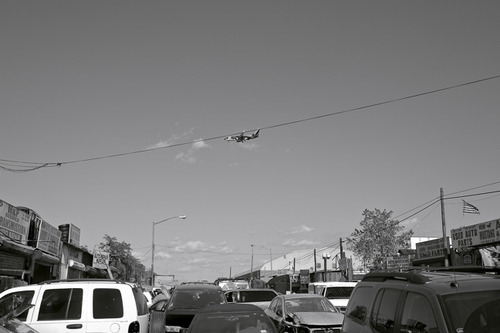
© Jaime Permuth, from the series ‘Yonkeros’
I grew up during the tough years of the Guatemalan civil war. As such, we lived in a climate of fear and censorship and learned to keep our innermost thoughts secret. At times, even from ourselves. Significantly, I was also part of a minuscule Jewish community in an overwhelmingly Catholic country. Which is all to say: I was always an outsider and made-to-order for the restless, obsessive, wandering soul of photography.
Throughout the years my artistic practice has been defined by a sustained exploration of the complexities of personal identity. My latest project is entitled “Yonkeros” ” after the vernacular term that describes businesses that specialize in junk and scrap metal. The word is a corruption of the English “junk” which becomes “yonk” to the Latin ear, and is then conjugated elegantly and correctly in Spanish so that “el yonke” comes to mean the junkyard and “yonkero” the person who works with junk.
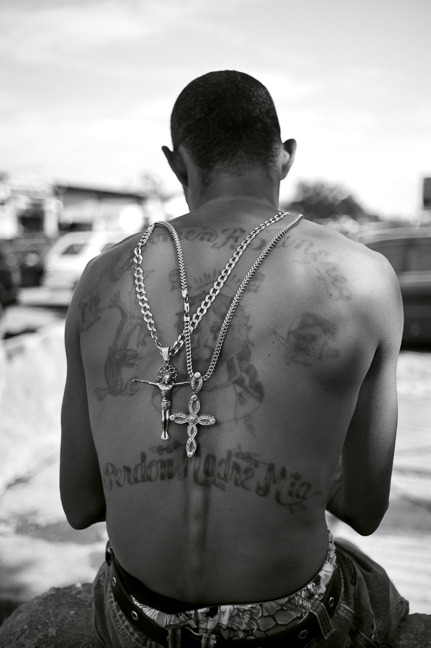
© Jaime Permuth, from the series ‘Yonkeros’
To arrive in Willets Point, is to encounter a a blighted landscape and experience an acute sense of dislocation: there are no sewers, no sidewalks, and the dirt roads are broken up by giant water-logged craters. Hulking heaps of rusting metal and ruined vehicles clutter the horizon. The sounds of Spanish drift in from every direction. And towering above it all, rises Citi Field Stadium: a shining, billion dollar sports palace and the ultimate reason for Willets Point’s imminent demise.
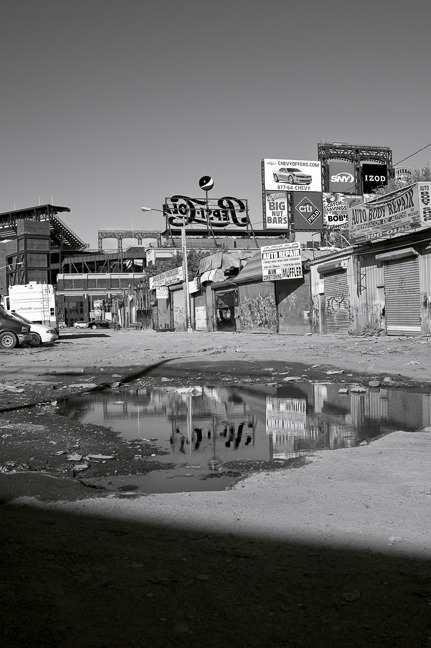
© Jaime Permuth, from the series ‘Yonkeros’
I spent a year photographing this small and relatively unknown enclave of the city. Yonkeros is a story of Third World ingenuity and survivalist strategies vis-a-vis First World obsolescence and waste. Various other themes run through the work as well. The series is a chronicle of a struggle against impossible odds, the search for personal redemption, and a meditation on the changing character of New York City. But above all else, Willets Point is a vast accumulation of parts. And like every catalogue, it is also a poem.
Does your own work influence how or what you teach?
JP: Yes. I prefer to teach in my own areas of expertise. Quite simply because it is the very best I have to offer to my students. However, I also welcome teaching assignments that make me stretch beyond my comfort zone. Ultimately, they keep me engaged and help to broaden my own perspectives on photography. For instance, last year I taught a course entitled “Ways of Seeing” for New York Film Academy. Although it has a hands-on, practical component, the course is essentially a historical survey. It was the first time I taught such a class and I’m grateful that I did. It elevated and formalized my own knowledge of the medium’s history and also suggested some new possibilities for creative exploration in my own practice.
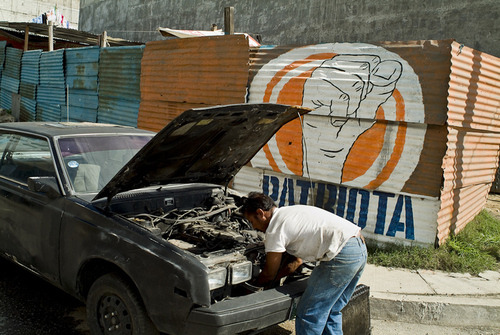
© Jaime Permuth, from the series ‘Vota Así’
Moreover, I’m a firm believer that educators should be active contributors to their field of choice, leading students by example. I often refer to my own experience as a fine artist in order to discuss the real-world skills and best practices that will help my students succeed professionally when they graduate.
What are your inspirations in terms of books and photographers that you have loved the most? Do you have a book to recommend to our readers? Which emerging photographer has recently interested you?
JP: Growing up, there were no photography schools in Guatemala. My own education was largely made up of the books in my father’s library. My first love was Robert Capa and after that I made my way through the works of Cartier Bresson, Kertesz, Brandt, Brassai, and Koudelka. Later on, I discovered Alvarez Bravo. It was turning point for me and his images and words had the most far-reaching and enduring effect on my early aesthetic development. In the 90’s I enrolled in the MFA Photography program at the School of Visual Arts and moved to New York City. After graduation, I found work as a black and white printer for some of my favorite photographers: Patrick Demarchelier, Lois Greenfield, Rosalind Solomon and -most significantly for my own practice- the legendary Gilles Peress.
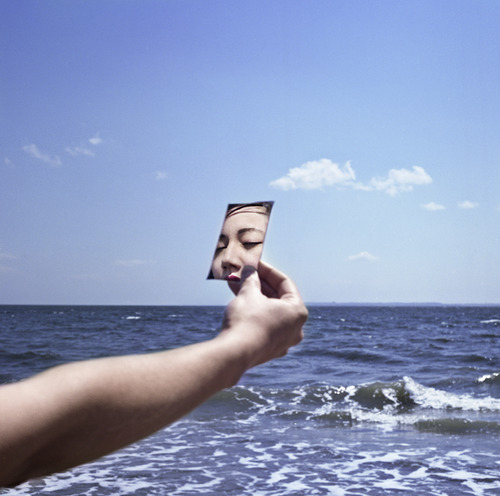
© JingJing Luo, student NYFA
In terms of recent projects by other photographers, one of the most impressive ones I’ve come across is Simon Norfolk’s journey to Afghanistan following in the footsteps of nineteenth-century British photographer John Burke. Norfolk takes his cue from and responds to Burke’s imagery of war in Afghanistan with his own photographs of the second Anglo-Afghan conflict. I was struck by the ambitious way the project was conceptualized and the seriousness and discipline with which Norfolk went about producing it. Both bodies of work are powerful in their own right and certainly I can understand why Norfolk describes it as a “collaboration”. And yet, the most surprising aspect of the project is that the politics of both photographers are diametrically opposite one another, with Burke being the embodiement of the British Empire and Norfolk being one of its most tenacious critics.
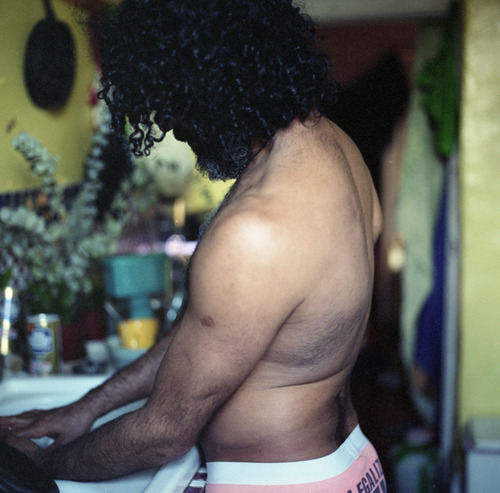
© Ibai Vigil-Escalera, student NYFA
A book to recommend? Some of the books I’ve bought in the last year are “Zoe Strauss: 10 Years”; Mitch Epstein’s “Berlin”, Viviane Sassen’s “Parasomnia” and several titles by Anders Petersen. Also Will Steacy’s “Photographs Not Taken”, which has proved to be a very valuable tool in my classroom.
Finally what about your present photographic research and projects for the future?
JP: I’m writing to you from Seoul, Korea where my Yonkeros solo exhibition opened last month at Ryugaheon Gallery. Earlier this year, La Fabrica Editorial (Madrid) published a monograph of Yonkeros which has already been presented at La Fototeca in Guatemala City and at the International Center of Photography (ICP) in New York. Next stop on the tour is Gimnasio de Arte in Mexico City in October.
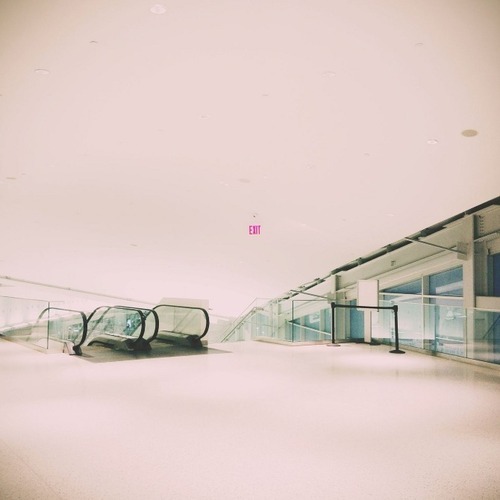
© David Alvarado, student NYFA
This is my fifth visit to Seoul in as many years. This time, I’ve extended my stay by a few extra weeks in order to conceptualize and do the preliminary research for my next project. As such, I’m exploring the city’s history and streets, shooting some images and hopefully planting a seed for the future.
---
LINKS
Jaime Permuth
United States
share this page